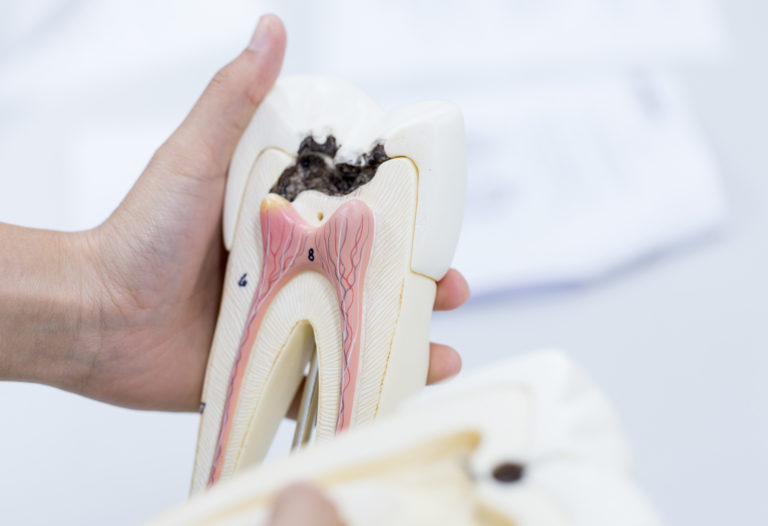
Root canals repair and save a tooth that has become badly decayed or infected. The root and pulp of the tooth are removed and the area inside is thoroughly cleaned and sealed preventing further decay or infection. It is then often fitted with a custom crown and post to ensure the strength and durability of the tooth.
According to the most recent American Dental Association Survey of Dental Services, almost 41,000 root canals are performed every day in the U.S. and close to 15 million are done over the course of a year. Since the success rate of endodontic treatment is well over 90%, and because maintaining a patient’s natural dentition is essential to overall oral health, root canal therapy as opposed to having the involved tooth extracted is a widely recommended option in care.
When a tooth becomes damaged or develops severe cavities, it becomes susceptible to infection within the pulp tissue. When the pulp is infected, a toothache or abscess can occur. When left untreated, the infection can become very serious. The purpose of a root canal treatment is to remove the infected pulp and nerve tissue inside the tooth and prevent infection from spreading to other parts of the body.
Modern technology and advanced methods of care make getting a root canal procedure as comfortable, and no more complex, than getting a routine dental filling. While some root canals can be completed in one visit, others may involve 2 or 3 appointments. How many visits it takes to complete a root canal procedure depends on factors such as the number of canals in a tooth, their anatomy and whether an active infection is present.
When root canal therapy is recommended, it is important to get timely care. If left untreated, the damage to a tooth and the risk of infection increase, as do the consequences to oral health and overall well being.
Luckily, the presence of a tooth’s nerve is not crucial to the overall health and function of the tooth. The main role of the nerve is to send hot and cold sensations to the brain. After the nerve is removed during a root canal treatment, the tooth is still able to function normally on a day-to-day basis.
According to the most recent American Dental Association Survey of Dental Services, almost 41,000 root canals are performed every day in the U.S. and close to 15 million are done over the course of a year. Since the success rate of endodontic treatment is well over 90%, and because maintaining a patient’s natural dentition is essential to overall oral health, root canal therapy as opposed to having the involved tooth extracted is a widely recommended option in care.
When a tooth becomes damaged or develops severe cavities, it becomes susceptible to infection within the pulp tissue. When the pulp is infected, a toothache or abscess can occur. When left untreated, the infection can become very serious. The purpose of a root canal treatment is to remove the infected pulp and nerve tissue inside the tooth and prevent infection from spreading to other parts of the body.
Modern technology and advanced methods of care make getting a root canal procedure as comfortable, and no more complex, than getting a routine dental filling. While some root canals can be completed in one visit, others may involve 2 or 3 appointments. How many visits it takes to complete a root canal procedure depends on factors such as the number of canals in a tooth, their anatomy and whether an active infection is present.
When root canal therapy is recommended, it is important to get timely care. If left untreated, the damage to a tooth and the risk of infection increase, as do the consequences to oral health and overall well being.
Luckily, the presence of a tooth’s nerve is not crucial to the overall health and function of the tooth. The main role of the nerve is to send hot and cold sensations to the brain. After the nerve is removed during a root canal treatment, the tooth is still able to function normally on a day-to-day basis.
